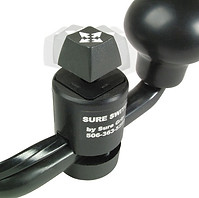Adaptive Driving

Adaptive equipment for vehicles helps individuals with mobility challenges maintain their independence on the road. By customizing a vehicle with equipment like hand controls, specialized steering devices, and accessible driving features, these modifications enable a safer and more comfortable driving experience. With each solution tailored to the user’s specific needs, adaptive equipment ensures that anyone can confidently drive or ride, regardless of physical limitations. If you think you would benefit from adaptive equipment, give us a call for more information!
Types of Adaptive Equipment
































Who Would Benefit From Adaptive Equipment?
-
Limited upper/lower extremity mobility
-
Amputation
-
Limb Differences
-
Stroke
-
Cerebral palsy
-
Multiple Sclerosis
-
Peripheral neuropathy
-
Low Vision
-
Visual Impairments
-
And more!
Steps To Begin Driving with Adaptive Equipment
-
Clinical evaluation with occupational therapist to identify strengths, goals, and educate on adaptive equipment options.
-
In-vehicle assessment to try out adaptive equipment and determine needs.
-
Training with equipment to ensure comfort and safety with the ultimate goal of independent driving.
-
Experienced driver: 6-10+ hours of training with adaptive equipment.
-
New driver: 20+ hours of training prior to road test.
-
-
Completion of road test with the Secretary of State or third-party road-testing agency (if necessary).
-
Provide full report of adaptive equipment and vehicle modification needs to client, vendor, and funding agency.
-
Once a client's personal vehicle is modified, a vehicle and equipment fitting is completed to ensure equipment is installed as prescribed.





